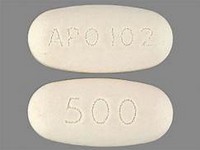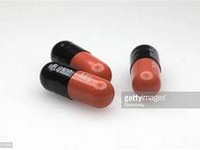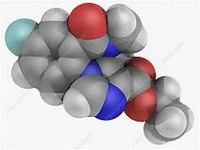Etodolac

Etodolac
CLINICAL USE
NSAID and analgesic
DOSE IN NORMAL RENAL FUNCTION
600 mg daily in 1–2 divided doses
PHARMACOKINETICS
Molecular weight :287.4 %Protein binding :>99 %Excreted unchanged in urine : 1 Volume of distribution (L/kg) :0.4half-life – normal/ESRD (hrs) :6–7.4/Unchanged DOSE IN RENAL IMPAIRMENT
GFR (mL/MIN)
20 to 50 : Dose as in normal renal function, but avoid if possible 10 to 20 : Dose as in normal renal function, but avoid if possible <10 : Dose as in normal renal function, but only use if on dialysis DOSE IN PATIENTS UNDERGOING RENAL REPLACEMENT THERAPIES
CAPD :Not dialysed. Dose as in normal renal function HD :Not dialysed. Dose as in normal renal function HDF/high flux :Unknown dialysability. Dose as in normal renal function CAV/VVHD :Unlikely to be dialysed. Use lowest possible dose IMPORTANT DRUG INTERACTIONS
Potentially hazardous interactions with other drugsACE inhibitors and angiotensin-II antagonists: antagonism of hypotensive effect, increased risk of nephrotoxicity and hyperkalaemiaAnalgesics: avoid concomitant use of 2 or more NSAIDs, including aspirin (increased side effects); avoid with ketorolac, increased risk of side effects and haemorrhageAntibacterials: possibly increased risk of convulsions with quinolonesAnticoagulants: effects of coumarins enhanced; possibly increased risk of bleeding with heparins and coumarinsAntidepressants: increased risk of bleeding with SSRIs and venlafaxineAntidiabetic agents: effects of sulphonylureas enhancedAnti-epileptics: possibly increased phenytoin concentrationAntivirals: increased risk of haematological toxicity with zidovudine; concentration possibly increased by ritonavirCiclosporin: may potentiate nephrotoxicity Cytotoxic agents: reduced excretion of methotrexate; increased risk of bleeding with erlotinib Diuretics: increased risk of nephrotoxicity; antagonism of diuretic effect; hyperkalaemia with potassium-sparing diuretics Lithium: excretion decreased Pentoxifylline: increased risk of bleeding Tacrolimus: increased risk of nephrotoxicity ADMINISTRATION
Reconstition
– Route
Oral Rate of Administration
–Comments
Take with or after food .ETodoLAC 287 OTHER INFORMATION
Inhibition of renal prostaglandin synthesis by NSAIDs may interfere with renal function, especially in the presence of existing renal disease – avoid if possible; if not, check serum creatinine 48–72 hours after starting NSAID – if increased, discontinue therapyIn patients with renal, cardiac or hepatic impairment, especially those taking diuretics, caution is required since the use of NSAIDs may result in deterioration of renal function. The dose should be kept as low as possible and renal function should be monitoredUse normal doses in patients with ERF on dialysis if they do not pass any urineUse with caution in renal transplant recipients – can reduce intrarenal autocoid synthesisAccumulation of etodolac is unlikely in ARF, CKD or dialysis patients as it is metabolised in the liver.
See how to identify renal failure stages according to GFR calculation
See how to diagnose irreversible renal disease
Home









